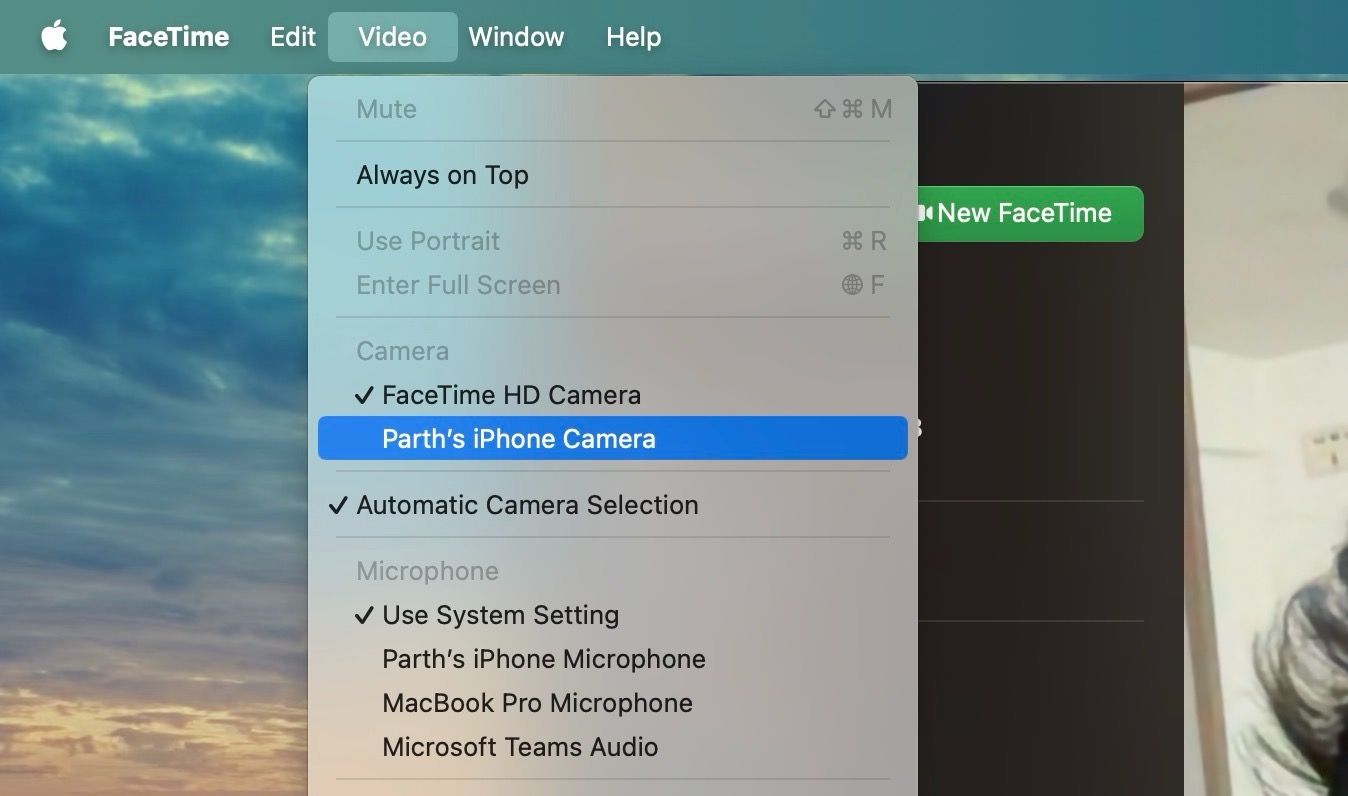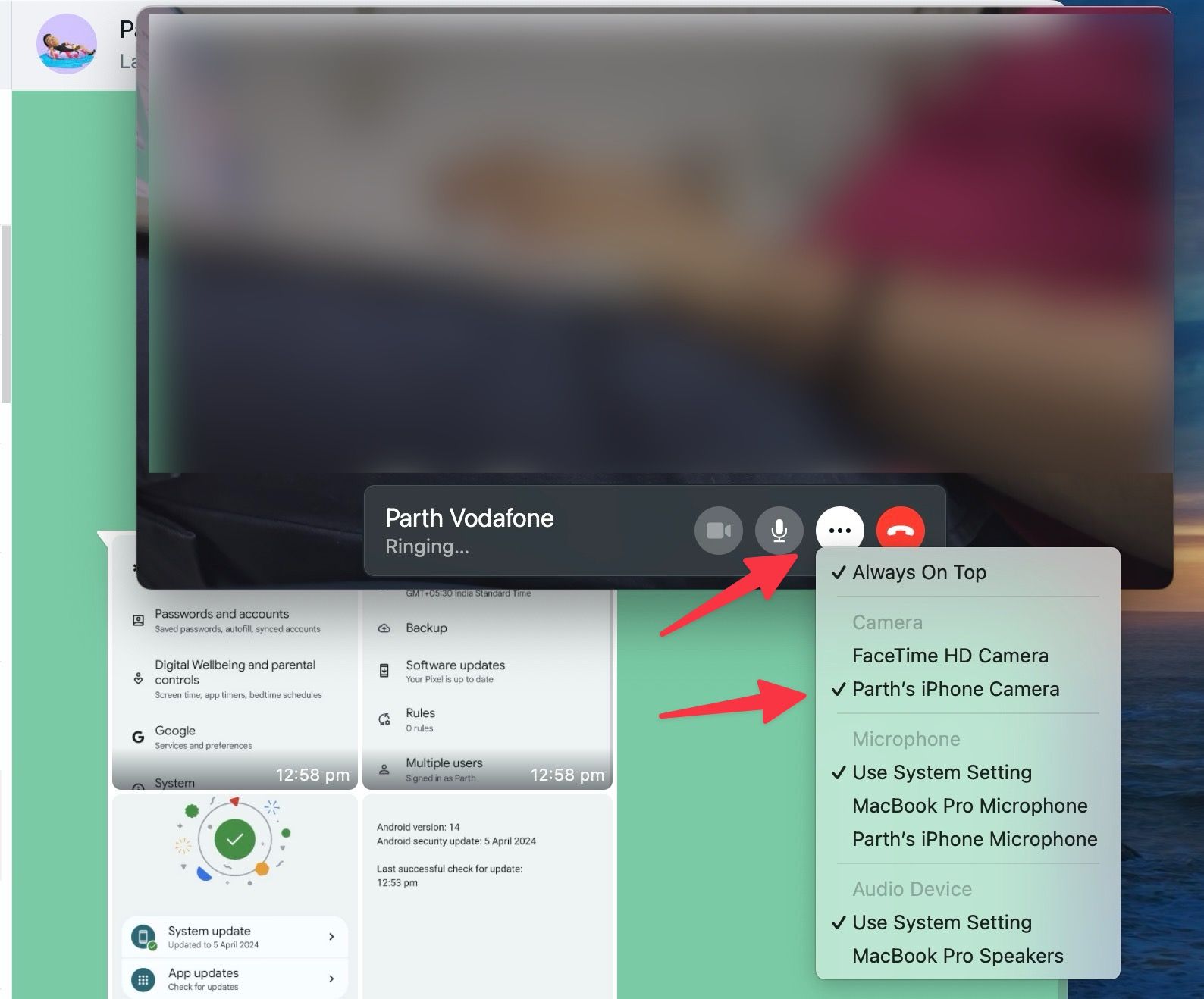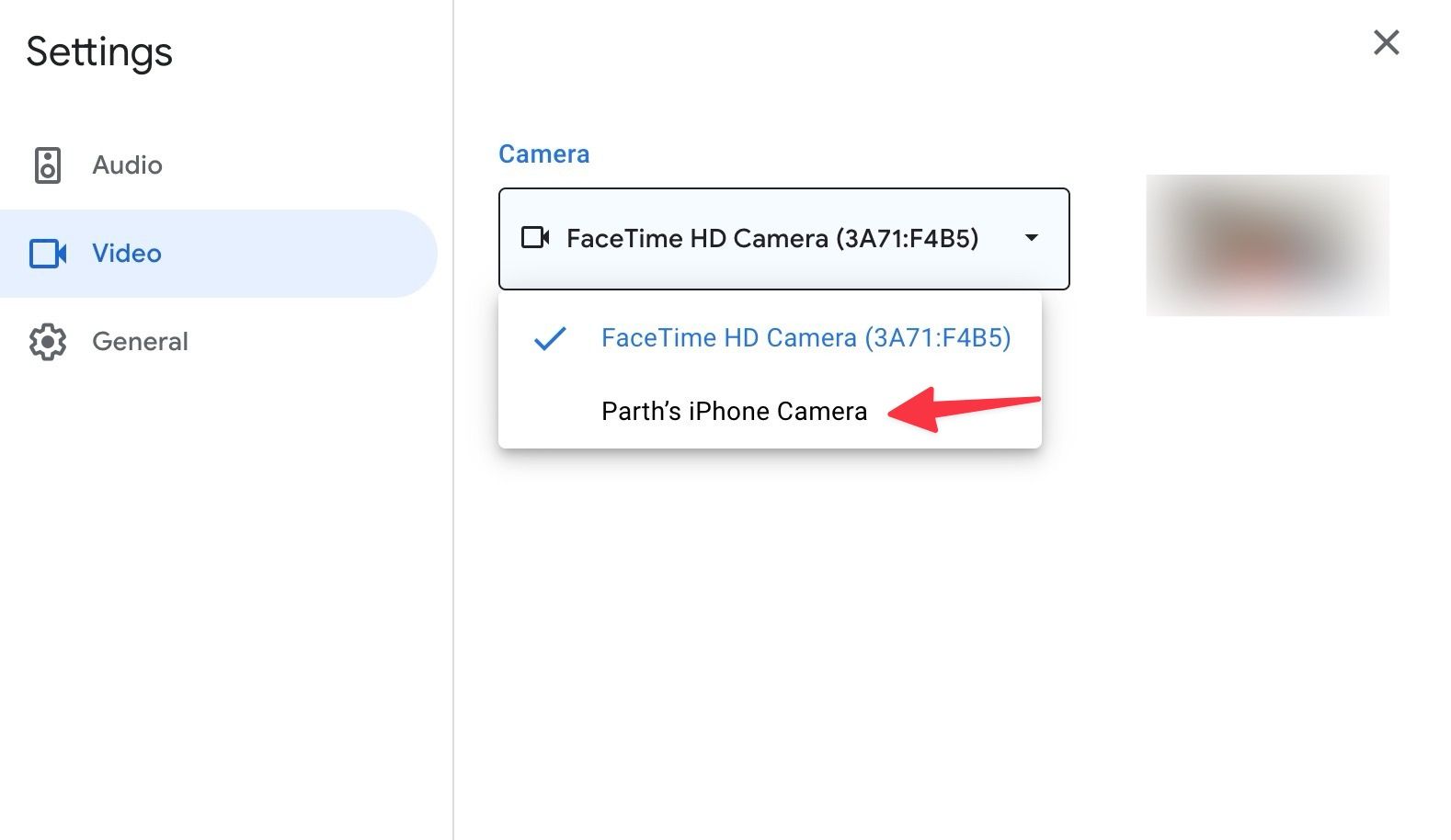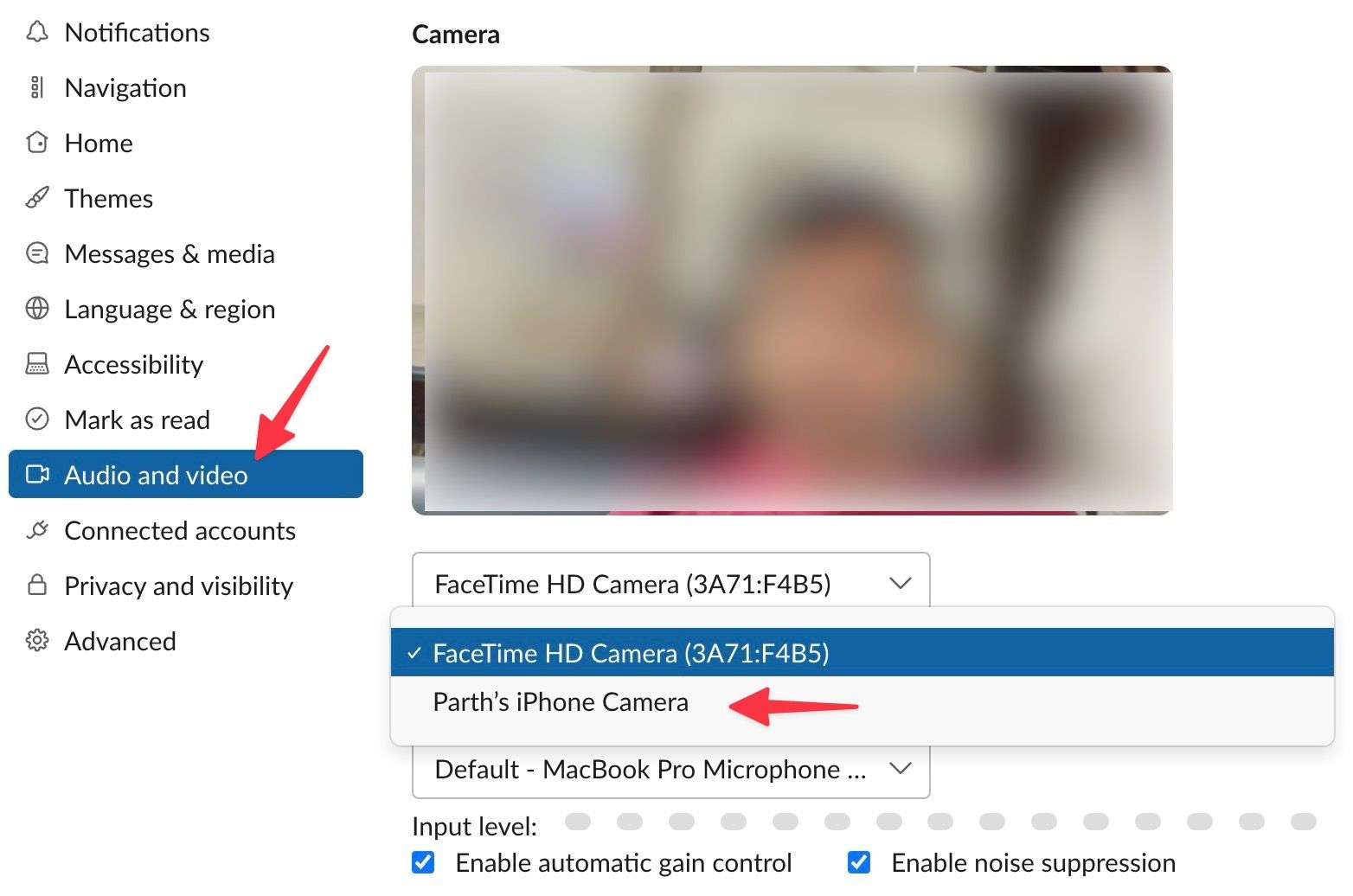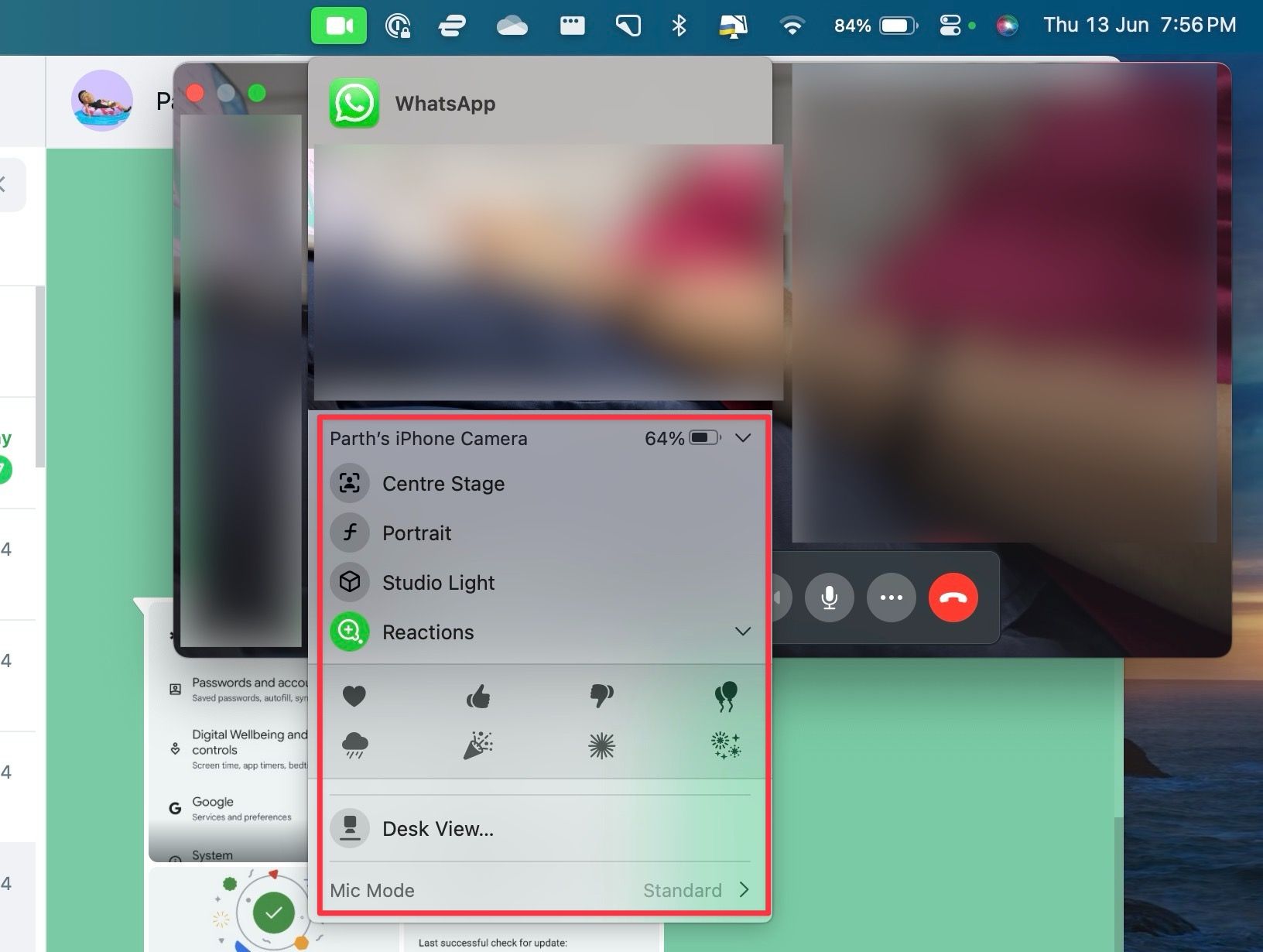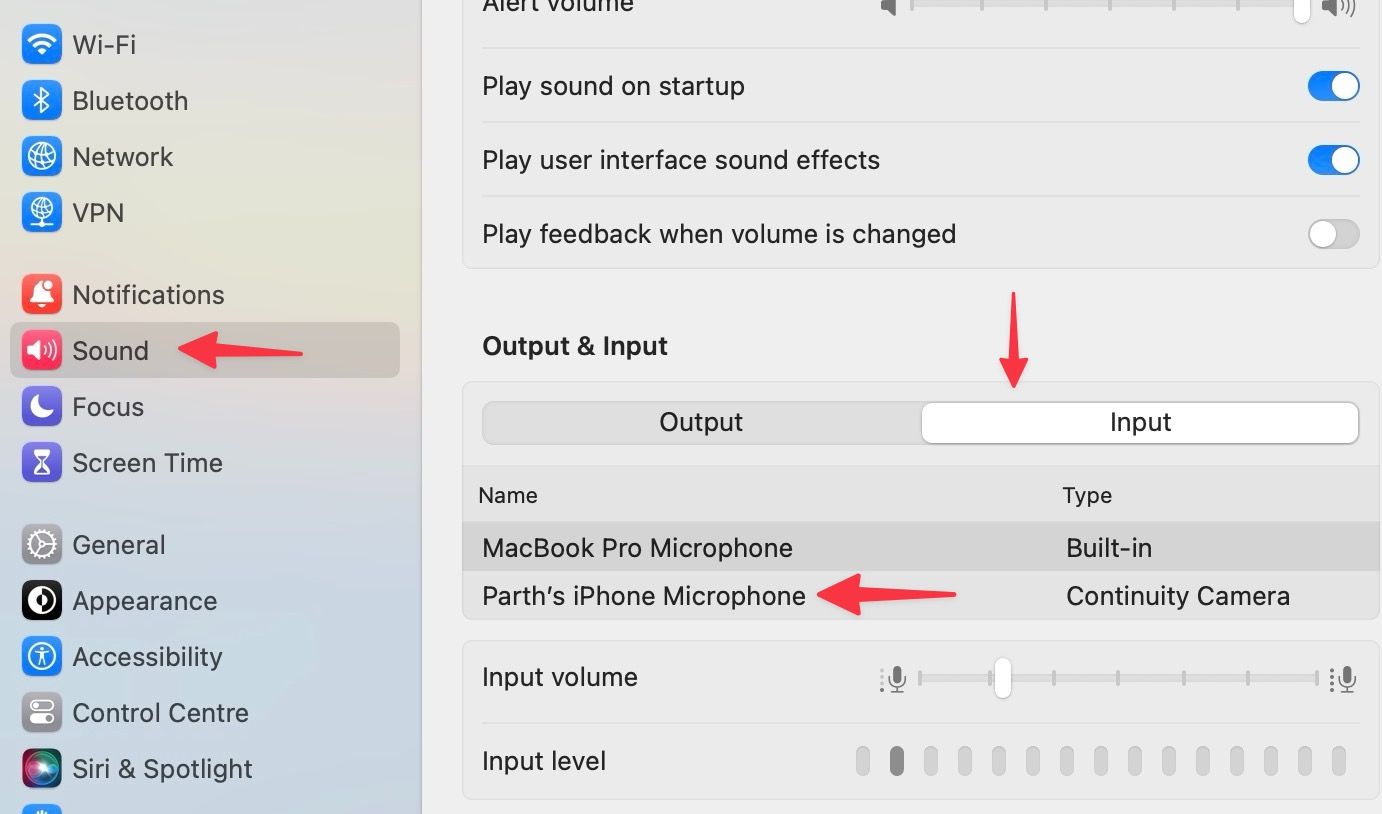Virtual communication has become an integral part of our lives. Whether you are a professional or a student, a high-quality webcam is essential for smooth video calls. While most high-end laptops, MacBooks, and Chromebooks offer a 1080p webcam, it’s average compared to your phone’s primary camera. Apple’s Continuity Camera has excellent camera quality, easy-to-use features, and a seamless setup that makes your iPhone a powerful webcam on your Mac. This guide explains the requirements, webcam setup, features, and other tweaks to enhance your video conferencing experience in minutes.

Related
How to identify the iPhone or iPad model you own
Know your iPhone or iPad model and pick accessories accordingly
Use your iPhone camera as a webcam: Requirements
Before you start, follow the requirements below for a glitch-free iPhone setup on a Mac. Otherwise, you’ll run into errors.
- Your Mac and iPhone must use the same Apple ID and have two-factor authentication turned on. The function doesn’t work with managed Apple IDs.
- Your Mac must have macOS 14 or later to activate all Continuity Camera features. Go to System Settings > General > Software update and install the latest macOS build.
- Your iPhone must run iOS 17 or later to unlock all Continuity Camera add-ons. Install the latest iOS version from the Settings > General > Software Update menu. You must have an iPhone XR or a newer model.
- Turn on Wi-Fi and Bluetooth on both devices. You can use a cable or a wireless network to turn your iPhone into a webcam. If you prefer a wireless connection, make sure both devices are near each other.
- Turn on the Continuity Camera option under Settings > General > AirPlay & Handoff.
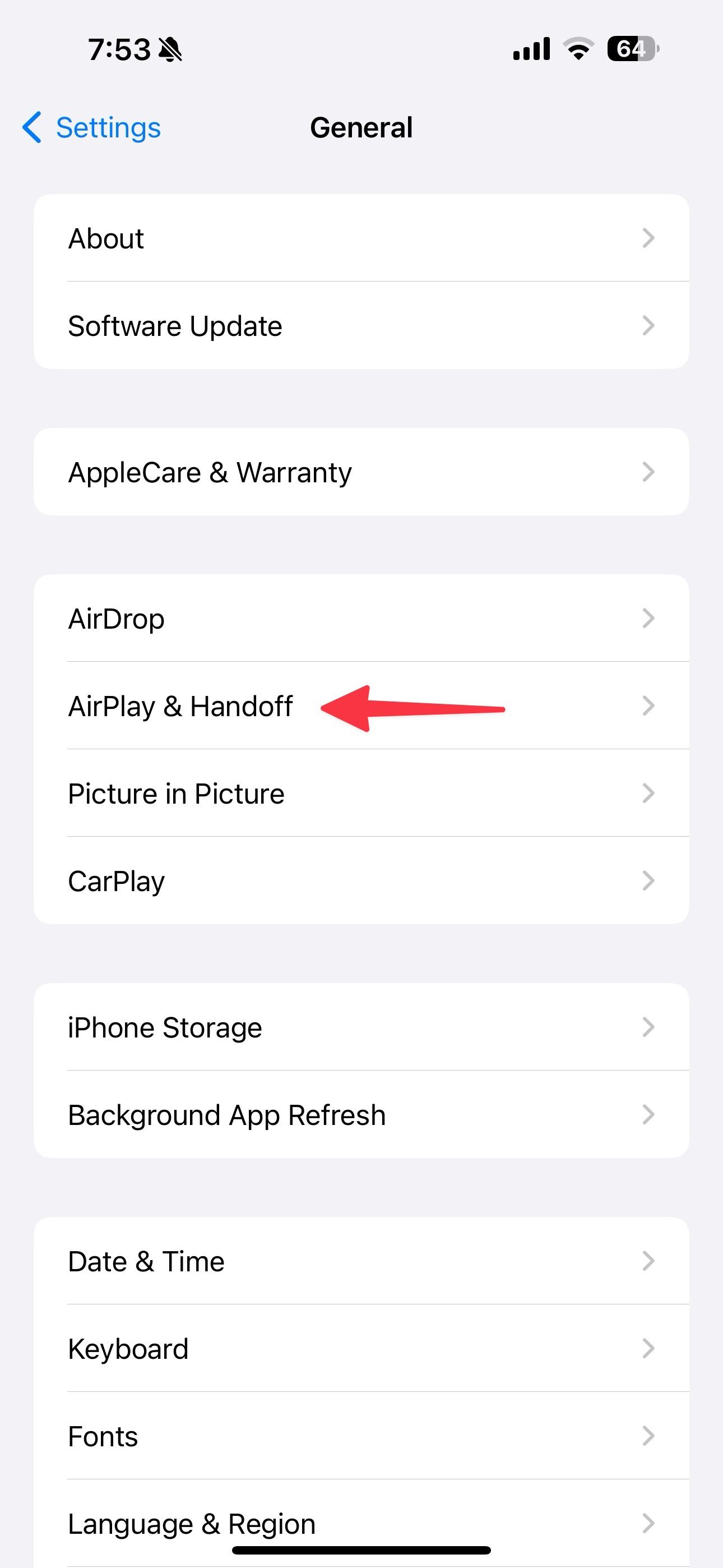
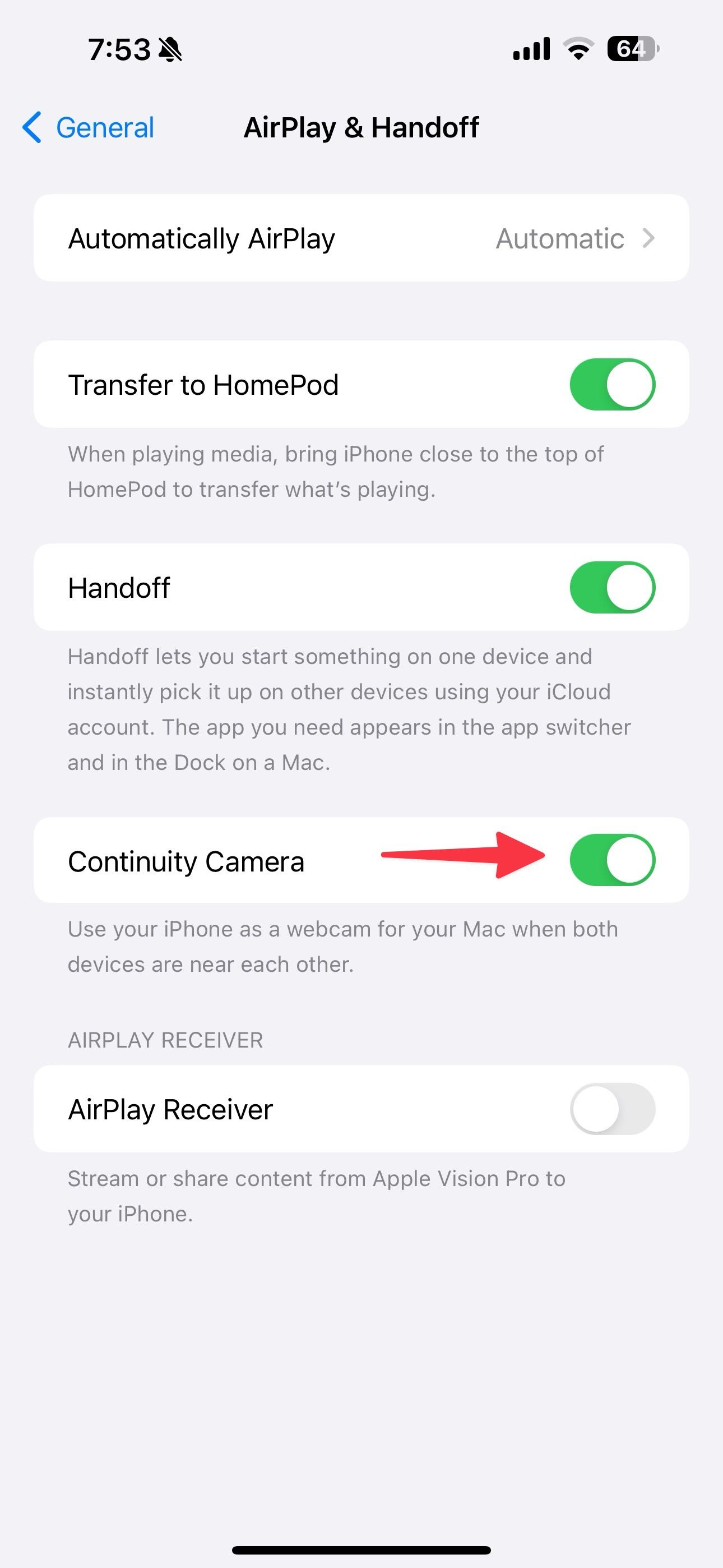
Some Continuity Camera features like Center Stage and Desk View require iPhone 11 or later. Studio Light is available on iPhone 12 or later.
Use your iPhone as a webcam
When you meet the requirements above, use the steps below to turn your iPhone into a webcam.
- Mount your iPhone on top of your MacBook or Mac desktop. You can use a third-party attachment accessory or a cell phone stand, but keep the device in landscape orientation. There is no shortage of such accessories on Amazon.
- Lock your iPhone. If you wake the device and use it, the system pauses the video feed.
- Turn on DND or Focus mode on the iPhone. If you receive a call on your iPhone, it pauses the video and audio until you end the call and lock the device.
- When your iPhone is set, select it as a webcam on the Mac.
You can use your iPhone camera and microphone in any third-party app, including WhatsApp, Google Meet, Zoom, Slack, Teams, Skype, and more. We show you how to set it as a webcam in the popular video conferencing apps.
FaceTime
Launch FaceTime and click Video in the top menu bar. Select your iPhone’s camera and check the video feed from your phone.
Open WhatsApp and go to a conversation to initiate a video call with someone. It opens a new window for your video call. Click the three-dot menu in the bottom bar and select your iPhone camera.
Google Meet
Google Meet users can follow the steps below to change the default camera.
- Visit Google Meet on the web and sign in with your Google account details.
- Select the Settings gear at the top.
- Slide to Video and select your iPhone camera from the drop-down menu.
Slack
Slack is a popular software solution for small teams and businesses. You’ll tweak the default camera from Slack Settings.
- Open Slack and head to Settings.
- Select Audio and video from the sidebar.
- Select your iPhone camera from the drop-down menu.
You can change the default camera from the video feed.
Explore Desk View and video effects
When you use the iPhone as a webcam on Windows, you can choose multiple video and microphone effects. Glance over the video call icon in the macOS menu bar and check the options below.
- Center Stage: Keeps you in focus even when you move around slightly in the room.
- Portrait: Creates a portrait effect during video calls and blurs the background. The option helps you hide a messy background.
- Studio Light: Illuminates your face when dealing with challenging lighting conditions. You don’t need external lighting equipment.
- Reactions: Let you share reactions during live video calls. You can select celebration, heart, thumbs up, and other reactions.
- Desk View: Uses the Ultra Wide camera on your iPhone to showcase the desk and your face simultaneously.
- Voice Isolation: Trims the background noise when taking a video from a noisy place. The person can hear you clearly.
Automatically switch to the iPhone camera
With default apps like FaceTime and Photo Booth, your Mac can auto-switch to using an iPhone as a webcam in the following conditions:
- The iPhone is locked and close to your Mac.
- The iPhone is in landscape orientation and has its rear camera facing you.
- The iPhone is not in a pocket or lying flat on a desk.
Set your iPhone as the default microphone
If you frequently use your iPhone as a webcam, set it as the default microphone from Mac Settings.
- Click the Apple icon in the menu bar and open System Settings.
- Scroll to Sound.
- Select your iPhone’s microphone from the Sound input devices.
You can also use third-party apps to turn your iPhone into a webcam on a Mac or a PC. Unless you don’t have a compatible iPhone and Mac, you should avoid using these apps.
Enhance your video calls in no time
Whether working from home, attending a virtual meeting, or catching up with loved ones, using an iPhone as a webcam can elevate your video call quality in seconds. Continuity Camera is one of Apple’s ecosystem features and works only on iPhone and Mac.
Google offers a similar solution with Android 14. However, in our testing, we didn’t find it as seamless and impressive as Apple’s solution. Microsoft is also working on a new Link to Windows feature to turn your Android phone into a wireless webcam on Windows 11.
Source link

